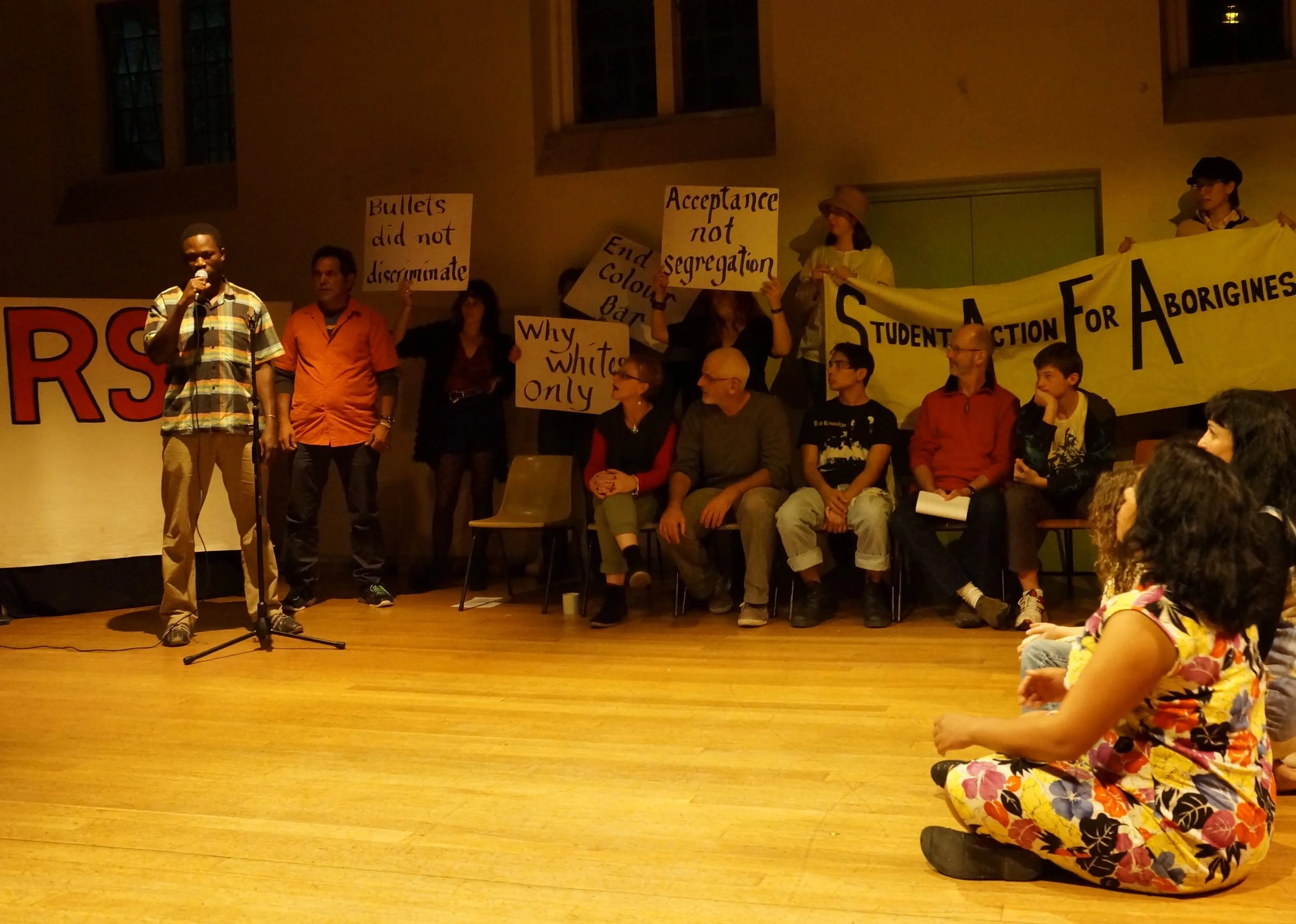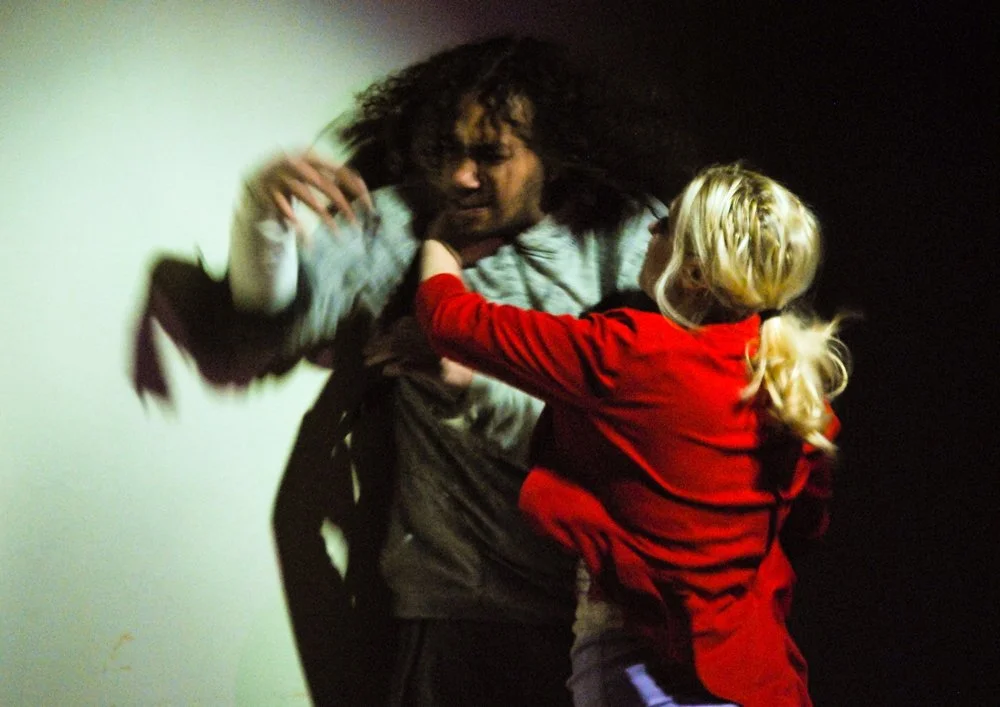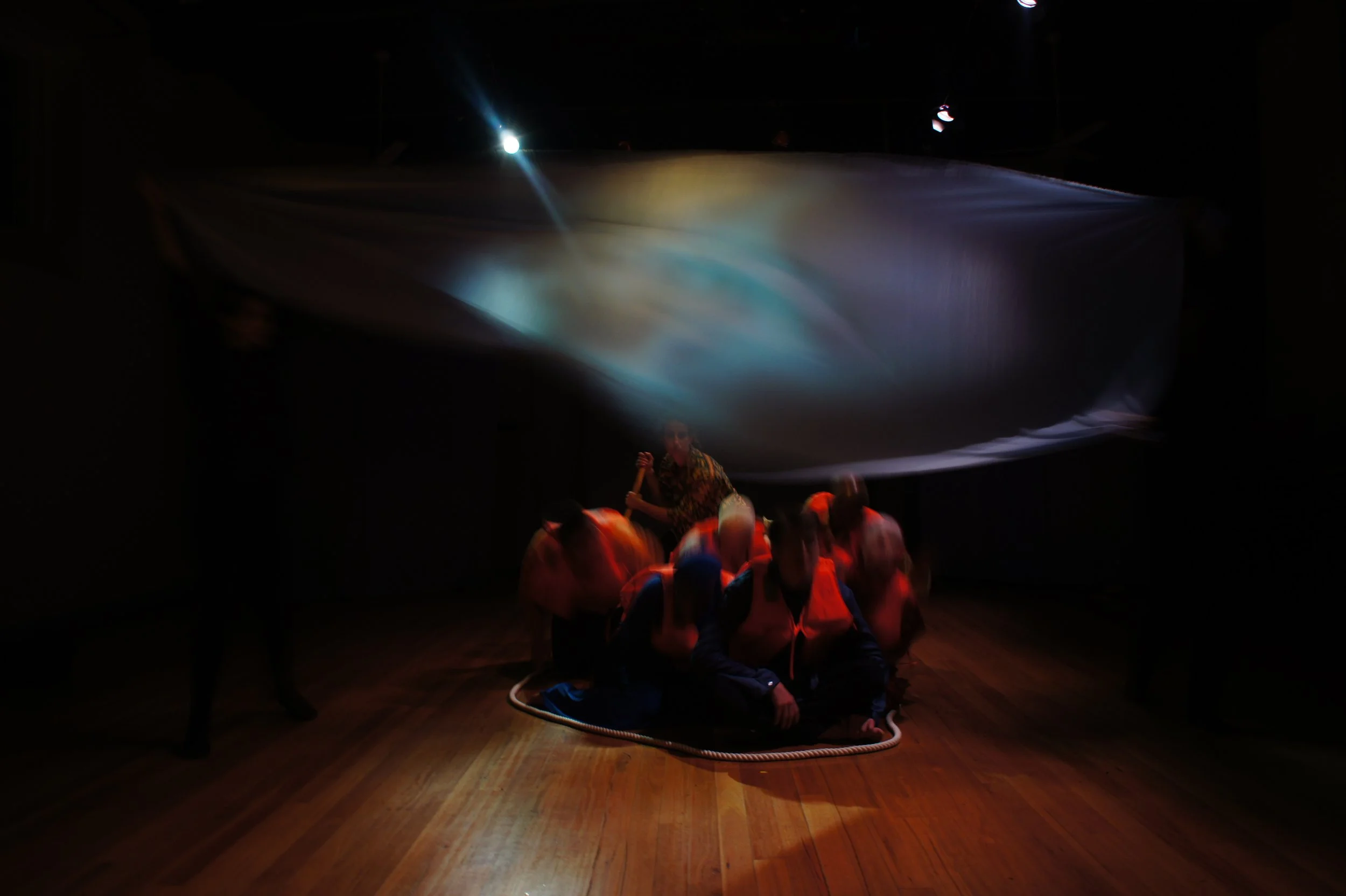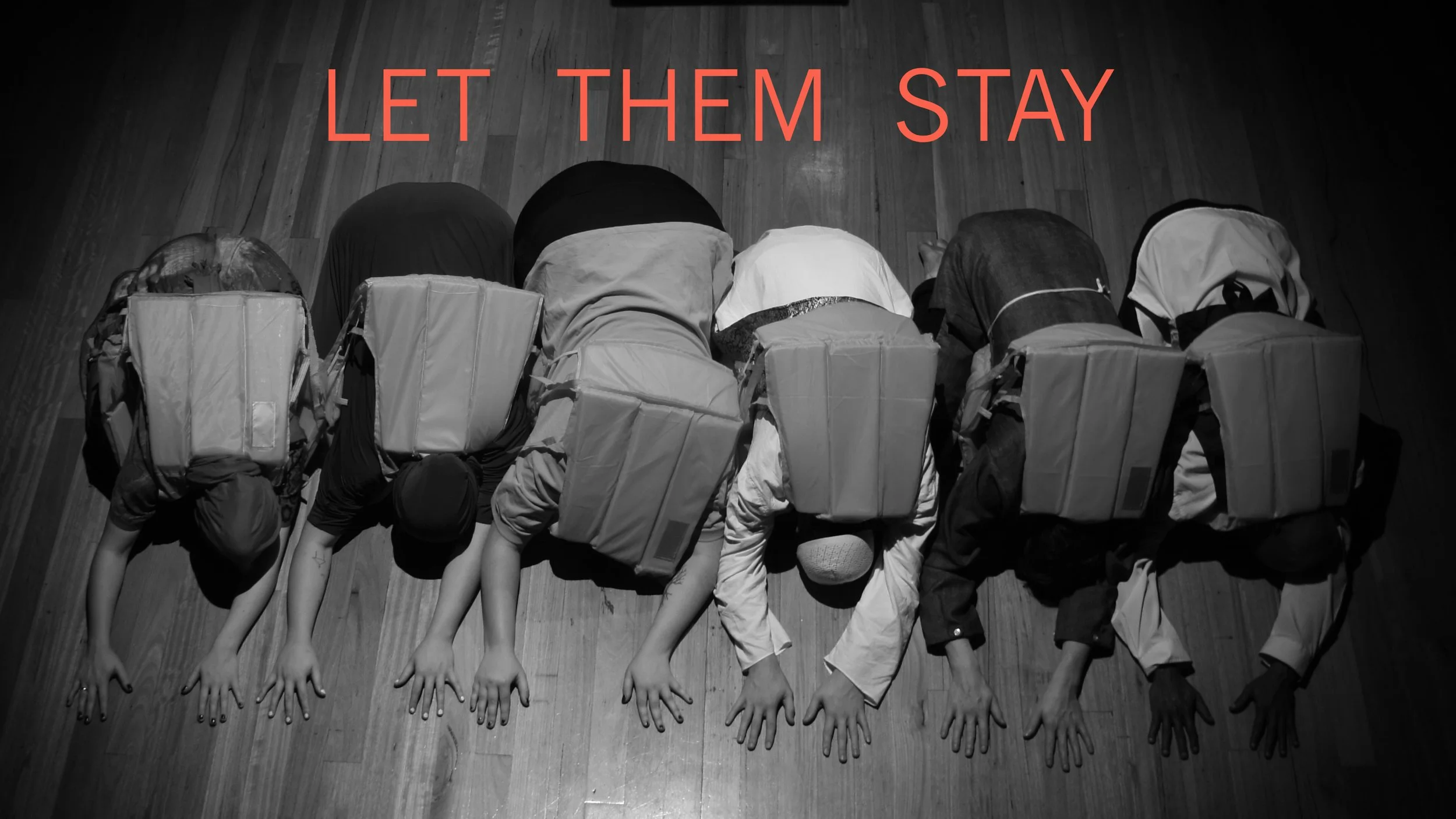THEATRE-IN-EDUCATION and WORKSHOPS
Since its genesis in 1975, the company has reached out to the wider community by offering classes, workshops, master classes and comprehensive annual courses. The modern and contemporary idiom was not yet readily available to study in those days, yet there was a thirst in the general public to explore dance and theatre beyond the classical and conventional styles. The company filled that gap in Sydney in the ‘70s, both for amateurs and aspiring professionals.
The company also provided high quality theatre-in-education programs for primary, secondary and tertiary institutions. DANCE INSIGHT started in 1980 and morphed into INSIDE OUT by 1984. The programs catered for the need to take contemporary dance and physical theatre to schools.
In 2000, the company received a life-time achievement award from the Performing Arts Unit of the NSW Department of Education.
INSIDE OUT ran in NSW and interstate until 2008. The VILLAGE SPACE program began in 2003 and finished in October 2016.
VILLAGE SPACE was designed for human rights education and social justice awareness training in high schools and tertiary institutions. It was also available for conferences and targeted communities. Some of the material was adapted for the general public. Particularly the plays HOME, REFUGE and THE FREEDOMRIDE.
In 2019, Jepke Goudsmit started OASIZ, a deep listening theatre workshop program for creatives of all disciplines. It is a practical platform, not only for the artistic practitioner, but also for teachers, healers, and anyone who travels the path of life with an inquiring and creative mind.
A meeting place where participants come together for revitalization and nourishment. A place of respite and home-coming where creativity and theatremaking help us reconnect, reflect and reset our purpose. An intimate space where the flame and spirit of live theatre is rekindled. Some preliminary work was done towards the creation of short performance pieces around ‘Climate Grief’. This work, and the workshops themselves, have been on hold since the pandemic lockdown in 2021.
“I am driven by the urgency of our times, the need to reset our compass."
Jepke Goudmit
VILLAGE SPACE
An experiential learning project offering playful, dynamic, inter-active theatre events. The themes are relevant to the curriculum, and explored in a cross-curricular fashion. Each play is based on extensive research and fieldwork, with real life situations as creative starting points. Using storytelling, drama, music, song and dance, the shows zoom in on global justice and equality issues, and are set in Australia and around the world. They are packed with information and encourage participation, reflection, discussion and investigation.
The plays are performed in the round, with the action taking place not only in the centre, but everywhere. Essential to them is the active audience participation. Our cast of actors is augmented by a number of audience volunteers, who are briefed and rehearsed before the show. They take on a range of small parts. This involves a little text and/or a simple action, in scenes together with our actors. At certain moments the whole audience is addressed as ‘characters’ and cleverly seduced into ‘group’ participation. This active involvement is not only highly engaging and exciting if not electrifying, it has also the immediate effect that the stories of 'others’ become ‘our own’. By briefly walking in each other’s shoes, barriers and prejudices are taken down and an opportunity for empathy opens up. It creates the possibility of deep understanding that is generated from the heart.
Since its inception, VILLAGE SPACE has covered a wide range of issues: Homelessness, poverty, climate change/climate justice, indigenous struggles, refugees, hiv/aids, non-violent direct action, sustainability, racism, reconciliation, children’s rights. Of course many of these issues are interrelated, which comes out through our holistic treatment of the subject matter. VILLAGE SPACE plays have been performed widely in Sydney, the Sydney Basin and regional NSW. The program also regularly toured interstate, to Queensland, Victoria, Tasmania and South Australia. VILLAGE SPACE was a joint venture of KETC and the educational branch of Catholic Mission. The company was commissioned by Catholic Mission to develop and design the program, and was sponsored by them from 2003 until 2014. From then on the company ran the program independently unti 2016.
In 2015 and 2016 the company’s theatre-in-education program offered three plays, namely HOME, REFUGE and THE FREEDOMRIDE, which were also adapted to performance environments for the general public. All three have been earmarked for publication by KINETIC ENERGY PRESS.
THE FREEDOM RIDE
A doco-drama about the famous historical indigenous rights campaign from the 1960s.
From July 1964 to February 1965 a group of students at the University of Sydney planned, and put in motion, an action designed to draw attention to racial discrimination against Aborigines. This culminated in thirty of these students, most of them under twenty years of age, going on a bus trip around racist towns in Northern NSW. An action known today as The Australian Freedom Ride. This groundbreaking campaign for indigenous rights in Australia is a joyful and inspirational story of courage and conviction, which brought many Australians together during the sixties in a shared cause. Through interactive drama and storytelling, our audience are immersed in the civil rights issues of the day, and, hopefully, are encouraged to investigate the state of racism and indigenous rights now.
Our dramatisation is based on these major sources: Professor Ann Curthoys’ book “Freedom Ride: A Freedom Rider remembers”; Darce Cassidy’s audio recordings of the event, Charles Perkins’ biography “A Bastard Like Me”. From this material, combined with music and songs of the sixties, Australian slang (and racist language), the hip jive-talk and beat generation vocab of the time, we have composed a powerful and entertaining doco-drama which recreates the cultural behaviour and attitudes of the time.
The play starts with a meeting on the Sydney University campus where the students plan and prepare for the campaign. It then zooms in on events transpiring in the town of Walgett. The characters portrayed are key people who were there: the great Aboriginal leader Charles Perkins, and Ann Curthoys, Jim Spigelman, Pat Healy, Darce Cassidy and Wendy Golding: these members of SAFA (Student Action For Aborigines) were instrumental in getting the Freedom Ride on the road. And in Walgett: the courageous Kamilaroi woman Pat Walford (famous for her “I’m black and I’m proud of it” speech), the racist RSL manager, and George Rose (an Aboriginal ex-serviceman who is barred from the RSL), the two-faced Anglican minister Reverend Dowe, and the infamous lady running the Walgett frock shop.
The play also looks at the push for Constitutional change at the time, resulting in the successful 1967 Referendum. And it examines the tools of the global peace movement and the American Civil Rights movement: non-violent direct action, as initiated by Mahatma Gandhi and Martin Luther King.
We are left with some nagging questions: What was achieved? Does the reality lived by Aboriginal people today correspond with rights won then and since then? Questions which tie in with the current Uluru Statement from the Heart campaign and the possibility of new referendum on its call for Voice, Treaty & Reconciliation. The many ongoing issues of racism in this country are summed up in movements like Close The Gap, Black Lives Matter, Death’s In Custody, New Stolen Generations & Stolen Wages, and so on. The long to-do-list underpins the urgency to address racism once and for all, and clean up those areas where many Aboriginal people are still severely disadvantaged: health, housing, education and employment.
HOME
Music theatre with a punch, a real look at the surreal world of the homeless, the art of finding pearls in the gutter and music in the soup kitchen.
Set in Sydney’s Kings Cross, our cast of characters paints a multi-dimensional perspective on urban homelessness. Their stories are told with much humour, and use a wide range of musical and dramatic imagery. Stories of defiance and resistance, of pain and pathos, of kindness, vitality and love. The play seamlessly interweaves dramatic, poetic and musical textures, with pearls of wisdom gleaned from Australian folk song, Shakespeare and Henry Lawson. It is placed in a filmic soundscape ranging from jazz classics (including Bryce Rohde’s “Came A Ballerina” and Gil Evans’ version of Willie Dixon’s “Spoonful”), to contemporary slam and spoken word poetry.
The gap between rich and poor is widening. Homelessness is on the increase, especially among young people and families. Lack of affordable housing, a poverty-line existence, poor job opportunities, often coupled with drug & alcohol abuse and domestic violence: these are the circumstances taking young people down the gurgler and onto the street. One in two homeless youths is turned away from emergency shelters every night because services are full. Families are living in cars or yo-yo-ing between caravan parks and motels. Meanwhile, governments are cutting down on healthcare, education, social services and women’s refuges, while giving the big business end of town tax breaks...
Most of the action takes place in and around a Soup Kitchen run by the warm-hearted Sista Jo. In the first few scenes we meet the homeless protagonists: Nicky, who dropped out of High School before finishing year 10; Emily, who struggles with mental problems; Shakespeare, a street poet and social misfit; the Jockey, a university graduate unable to find paid employment; Old Paddy, a veteran drunk with an encyclopaedic knowledge of the area and the human condition of the poor. Gradually we learn more about their dreams and aspirations, their frictions and frustrations, and about how difficult it is to escape the vicious cycles they are caught up in. The childhood situation of both Nicky and Shakespeare is one of sexual abuse and violence. A ticket that doesn’t give an easy start, and is more often than not the recipe for repetition. It becomes clear that some of the worst aspects of homelessness are loneliness and isolation.
We see how some characters find a way to pull themselves out of their personal abyss (Nicky), others manage to tightrope-walk along the edge (Emily, Paddy, the Jockey) and one is pulled further down into the pits (Shakespeare). At the opposite ends of the spectrum, Nicky goes into detox and re-starts high school, while Shakespeare falls into theft, drug abuse and suicidal tendencies. Sista Jo rescues him when he overdoses one night. Later, the young people meet in the local library and discuss the lack of vision and true care from governments. As they analyse the competitive fabric of our society, based on their own direct experiences, they challenge one another to come up with ideas beyond the ‘norm and apathy’ of reality. Whilst hanging on to hope and vitality, the play poses serious questions about how such inequality is possible in a rich country like Australia.
HOME includes many insights gained from our fieldwork and engagement with: Missionbeat, Youth Off The Streets, The Salvos, Anglicare, St Vinnies, Ted Noffs Foundation.
REFUGE
A play about refugees and asylum seekers, and Australia's treatment of them.
For those who’ve come across the sea we’ve boundless plains to share…
A daring look behind fences and façades.
REFUGE tells the stories of children in detention, of boat people forced into off-shore detention, of stateless persons caught in endless red tape, of ethnic minorities trapped by discrimination, of people kept in limbo indefinitely, and of the whistle-blowers who bravely try to stop the litany of injustice. These are dark stories. The light comes from the spirit of solidarity shown by the refugees towards each other, from their sense of humour, their friendship and strength in extremely painful times. A light also shines through the efforts of those who care enough to show compassion, those who fight tirelessly for refugee rights. And sparks of hope and defiance light up in the courage displayed by the whistleblowers as they appeal to our humanity. Australia’s Refugee Policy has long been a great worry to many people. Refugees and asylum seekers have been used as a political football by both major parties. Since 1992, when mandatory detention was introduced, successive governments have toughened up on border protection. Boat people in particular have been singled out for harsh treatment. The last Liberal Governments have cloaked the issue in an atmosphere of fear and secrecy, fuelled by misconceptions and lies. Many refugee support organisations, including the United Nations High Commission for Refugees, have taken Australia to task for its inhumane treatment of asylum seekers. Australia has signed and ratified the UN Conventions on Refugees, Stateless Persons and the Rights of the Child. But are our refugee policies implementing what they should be, or are they falling short of our obligations? Who is illegal: the asylum seekers or the Australian policy makers? Why does someone become a refugee? What kind of circumstances does an asylum seeker have to cope with? Do we, who are blessed with freedom and wealth, have a moral responsibility to act? These are some of the questions the investigates.
REFUGE is an immersion into the haunting reality lived by those who are suffering at the hand of a flawed and cruel system. While the issue is blurred in the media, our play aims to debunk the myths, undo the demonization of asylum seekers, and does so in a clear and often humorous way, despite of its serious and complex subject matter. By raising awareness, it allows us to feel, be moved, and take action. To stand up for human rights. To this end, we enact true stories that are based on facts, eyewitness reports and the lived experience of victims/survivors.
REFUGE has several interwoven storylines that together create the larger tapestry containing the bigger picture:
Palm Sunday Rally. The president of the Refugee Council of Australia addresses a crowd of concerned citizens in Sydney’s Hyde Park. He puts forward the hard facts and paints a global map that connects us with the issues at hand.
Children in Detention. Here we witness the plight of a Sri Lankan refugee family going into their fifth year of indefinite detention in Villawood Detention Centre.
Stateless Persons. In which we tell the story of detainee Phillip Hassan, better known as the ‘Frequent Flier’, who was flown around the world many a time until his ancestral country accepted him back as one of its own. The story shows how someone gets caught in the traps and inadequacies of bureaucracy.
Boat People & Off Shore Detention. The government’s policy is to turn back boats before they arrive. This has sent countless refugees back to danger, even to death by drowning. Those who do manage to arrive here are transported for processing to off-shore detention centres and have no chance of resettlement in Australia. Asylum seeking men, women and children are languishing away. Doctors, nurses and other staff are gagged by a law that forbids them to report on acts of abuse and the conditions in the camps. We zoom in on refugees from countries with the lowest status: Somalia, Afghanistan, Irak, Sri Lanka, Iran.
REFUGE is based on extensive fieldwork: at the Villawood Detention Centre in Sydney, through engagement with diverse Refugee Action groups, and the inspiring collaboration we enjoyed with the Somali Women’s Association. Background consultation also includes the in-depth studies of the treatment of asylum seekers in Australia by the Edmund Rice Centre for Justice & Community Education (for example their “Deported to Danger” report) and Mark Isaacs’ book “The Undesirables”.
Photographs in this section are by Corrie Ancone, Lee McIver and Saha Jones.






